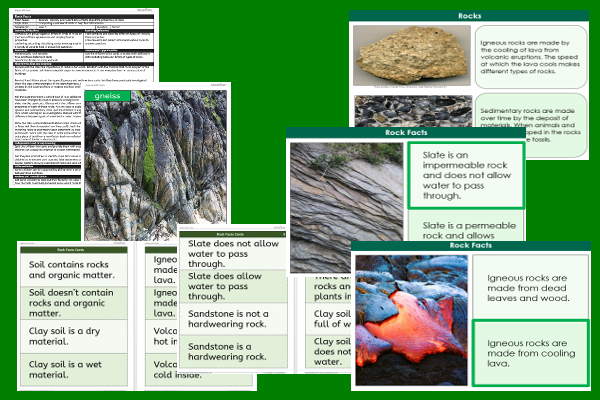Home > Key Stage Two > Science > Year Three Planning > Rocks
Lesson Eight – Rock Facts

This science teaching pack for Key Stage Two gets the children to identify and record sets of facts about the matching properties of different igneous, sedimentary and metamorphic types of rocks.
The class can explain and model how to research and collect information to answer key questions about the matching properties of each type of rock.
Download this teaching pack including a lesson plan, classroom activities and an interactive presentation to identify and record sets of facts about the matching properties of different igneous, sedimentary and metamorphic types of rocks
Activities in this teaching pack include display posters to identify and describe the matching properties of metamorphic rocks and differentiated sets of cards to identify and sort facts and information about different types of rocks as true or false.
The interactive presentation gets the children to explore how to record sets of facts about the properties of igneous, sedimentary and metamorphic rocks.
This lesson is part of a science scheme of work to get the children to identify, compare and classify different types of rocks, soils and fossils according to their matching material properties for appearance, texture and substance. There are teaching activities for shared learning, differentiated worksheets to support independent learning and interactive presentations to introduce concepts and key skills.
-

Maths Arithmetic Assessment
Assess abilities in solving arithmetic number problems for addition, subtraction, multiplication and division when working with informal and formal written calculations
-

Environment
Identify and describe some of the special landscapes and locations that can be found in the world and reflect on how they can be protected and preserved for the future
-

Silent Letter Words
Explore and illustrate the meanings and spellings of some different words with silent letters when using them in a range of topics and scenarios
-

Complaint Letters
Explain and model how to format and structure writing when composing letters of complaint about different issues and scenarios
